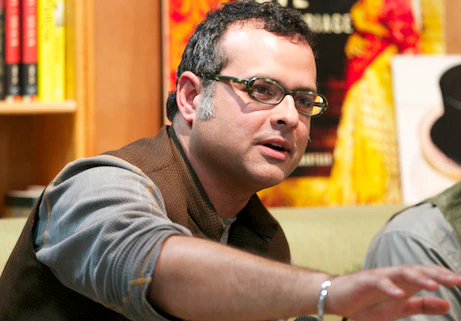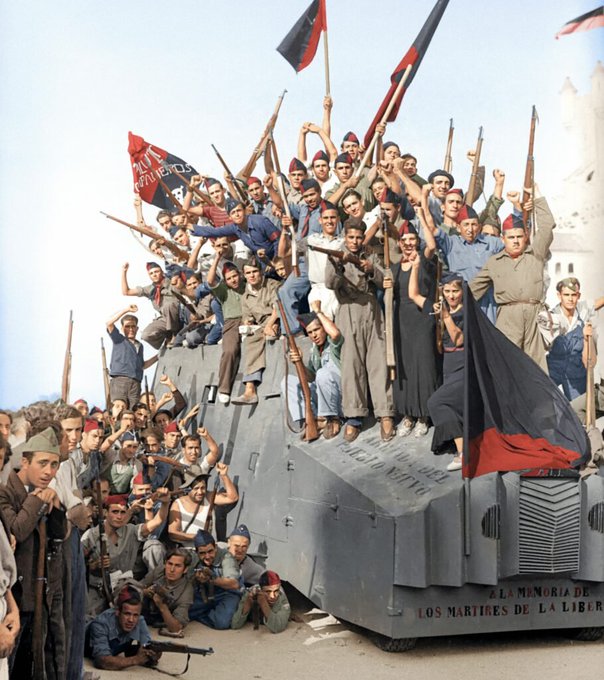The use of the term ‘War on Terror’ to describe the West’s campaign of military aggression in and around Iraq over the last decade has long been contentious. How do you wage a war on terror?
If the onus being on power to demonstrate the truth of this idea, the lack of supporting evidence — if not the mountain of evidence to the contrary — can only lead us to conclude that, as a descriptor, it is completely meaningless.
Compounding the problem is the apparent lack of a viable alternative. We know that ‘War on Terror’ means nothing; we know that it’s an ideologically driven, a priori term. So what then?
In lieu of anything better, ‘War on Terror’ survives as a legitimate part of popular discourse through the power of the Big Lie. If before that meant, ‘if you repeat it frequently enough people will sooner or later believe it,’ now it might also be amended to ‘if you repeat it frequently enough, lacking an adjective sans spin, people will sooner or later give in.’
The idea of a war on terror is the centerpiece of a series of PR myths deployed to establish pretexts for state terror in the form of military aggression overseas and oppressive authoritarianism at home; this is hardly a contentious observation anymore.
This being the case, what does can the associated events mean in practice then but a moral panic in the classic sense of the term?
Since what we are looking and (and in fact experiencing as living history) is a moral panic, we might find a better, non-ideological descriptor, and one that dispassionately and objectively encapsulates the processes at work, in ‘Terror Scare.’
When we begin to understand that what we are experiencing is moral panic (and in fact a scare campaign around Islamist terrorism, used to create a pretext for imperialist state terrorism) it becomes far easier to understand the present in historical context.
Moral panics are a understood as a unique sociological phenomenon in which communities or societies become subject to a ‘“wave of indignation” about non-existent or relatively minor threats’ (Goode and Ben-Yehuda). As such, they appear again and again throughout history.
Stanley Cohen’s Folk Devils and Moral Panics is the classic work in the area. Cohen describes three elements necessary for the construction of a successful moral panic:
1) a suitable enemy (‘a soft target, easily denounced, with little power’);
2) a suitable victim (‘someone with whom you can identify’), and
3) a consensus that the beliefs or actions being denounced were not insulated entities but are or could be integral parts of society ‘unless something is done.’
The suitable enemy in this instance are Muslims — a religious minority in the west, and thus poorly understood, not widely known, easily judged by those prone to judging first and understanding second, and with little power to defend themselves by virtue of their relative social marginality.
Likewise, the suitable victims here are Westerners, the Self in the false dichotomy of Self vs. Other, and those of us for whom similarity of culture and ethnicity makes sympathy easy — if not a matter of cognitive bias and outright prejudice.
The consensus that the threat is an acute one is established through the mainstream media — the Murdoch Press most notably, which with its daily images of terrorists and shrill, highly emotive headlines only serves to fan the Terror Scare flames.
Complementing this definition, for Goode and Ben-Yehuda, the basic characteristics of moral panics are heightened concern, increased hostility, widespread consensus, disproportionate appraisal, and general volatility.
Heightened concern manifests in the Terror Scare as the atypical fear that Western Civilisation is subject to a serious threat from Islamist terrorists. It gives rise to increased hostility, unmistakable in the anger expressed in the community towards Islamic fundamentalists — if not Muslims in general.
Similarly, we see a widespread consensus particularly in the mainstream media, and very much so amongst the more privileged sectors of Anglo Australia. As a measure of moral panic, disproportionate appraisal very clearly fits, not least because of the complicity of the West in creating and exacerbating political instability in the region historically.
Last but not least, general volatility as a measure of moral panic may be measured by such things as the current wars of aggression and the numerous examples of punitive harassment of Muslims at home. These along with many others are clear indicators of a Terror Scare.
In the previous century alone, we have seen moral panics manifesting these defining characteristics in any number of otherwise separate and distinct historical episodes.
In the United States, we saw amongst others the First Red Scare of 1919-1920, the Second Red Scare of 1947-1954, and the entirety of the Cold War of 1947-1991. In all cases the threat of Communism (however vaguely defined) was deployed as an ideological pretext for the suppression of dissent at home and of anti-imperialist movements overseas.
Similarly in Soviet Russia, Trotsky cited fears of Tsarist reaction as a pretext for the 1921 suppression of the Kronstadt mutiny. In 1934, Stalin cited fears of bourgeois subversion of the Soviet state surrounding the 1934 assassination of Sergei Kirov, head of the Leningrad Soviet, as a pretext for the Red Terror and the show trials that began two years later.
In Nazi Germany, moral panic was practically hard-wired into Nazi ideology and a permanent feature of Nazi politics in general. This was no more true than in the supposed plans for world domination contained in The Protocols of the Elders of Zion; for the Nazis these supposed covert plans for world domination were held to justify an overt one, along with the Holocaust.
Of course a direct comparison between the USA or Australia and Nazi Germany is as much an emotionally potent oversimplification as comparing Obama and Karl Marx. Parallels remain, however, and the fact that in Australia, the dynamics of moral panic have been used to create scapegoats out of refugees, for example, gives us further reason to pause.
This would seem particularly true if the construction of moral panics historically can be construed as something of a ‘Panic Industry.’ In all of the examples cited above, moral panic provided massive largesse in the form of the fruits of conquest, be they between countries or classes.
Discussion of such topics often seems to be regarded as extremely unfashionable, a symptom perhaps of their legacy.
In the Terror Scare, as in the panic over border protection, there is a payoff for the peddlers of fear in the form of control over Iraqi oil and a boost in the opinion polls. In the case of border protection the same is true, except in this instance it is companies like Serco who enjoy the spoils of the Panic Industry — so much so that they would suffer if refugees were to ever stop arriving.
People often marvel at the way ‘the public’ can be so susceptible to political manipulation, and why they constantly invite attacks on their interests by voting for scare-mongering, blame-shifting demagogues. The fact of the matter is that ideologically driven terms disguise them, and through the power of repetition make us more susceptible to other forms of propaganda.
In using an appropriately meaningful term to describe the Terror Scares we are currently experiencing, on the other hand, we can better appreciate their true character, and in so doing better understand their place in history, as well as our own.
Discover more from Ben Debney
Subscribe to get the latest posts sent to your email.




